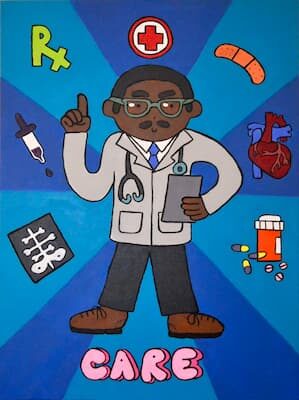Heat Exertion can produce serious injuries in the workplace. The medical condition is commonly known as Exertional Heat Illness (ESI.) Heat Illnesses are multi-causal. Human’s body temperatures can be elevated by a number of factors. First, there is the heat and humidity in the environment. Second, there is the clothing and equipment being used by the worker. Third, there is the nature, extent and the duration of the activities.
This article is focused towards the Heat Exertion as opposed to the Heat Exposure. Note: Heat Exertional Illness is a huge concern for military. Thus, this matter has been studied within that context. Heat Exertion is a concern for all military personnel. Even Military Working Dogs have been studied. Predicting military working dog core temperature during exertional heat strain: Validation of a Canine Thermal Model Catherine O’Brien William J.Tharion Anthony J.Karis Heather M.Sullivan https://doi.org/10.1016/j.jtherbio.2020.102603Get rights and content
In the civilian setting, there are also various occupations that involve serious issues that can bring rise to heat exertional illness.
This article will discuss Heat Exertion Illness, risk factors involved with HEI, the nature and extent of injuries arising from heat exertion, and how it can be addressed within a workers’ compensation setting.
What Is Exertional Heat Illness (EHI)?
Exertional Heat illnesses (EHI) is essentially a variety of medical conditions that may occur during physical exertion that is performed in hot and humid environments. This can be the case when there is performance of strenuous physical activities for extended durations in hot environments.
In the civilian workforce, HEI may impact occupations such as Agriculture, Construction Workers, Police Officers, and Refinery Workers.
For instance, with respect to Wildland Fire Fighters, a study noted the nature and extent of the clothing and equipment that they carry. The study noted that “WLFFs wear standard fire equipment: Nomex long-sleeve shirt and pants, mid-calf leather logger boots, a 100% cotton short-sleeve undershirt, leather gloves, hard hat, and a 12 to 20 kg pack containing food, water, safety gear, and work tools.” High Work Output Combined With High Ambient Temperatures Caused Heat Exhaustion in a Wildland Firefighter Despite High Fluid Intake John S.Cuddy MS Brent C. Ruby PhD https://doi.org/10.1016/j.wem.2011.01.008
Why is EHI a Serious Concern?
Due to the fact that EHI can cause a variety of medical conditions, there is also a wide range of medical problems that EHI can cause.
Mild forms of EHI can include heat cramps. Severe forms of EHI can include heat stroke. Severe EHI can lead to multiorgan damage and death. Alele FO, Malau-Aduli BS, Malau-Aduli AEO, J Crowe M. Epidemiology of Exertional Heat Illness in the Military: A Systematic Review of Observational Studies. Int J Environ Res Public Health. 2020 Sep 25;17(19):E7037. doi: 10.3390/ijerph17197037. PMID: 32993024.
Does Body Temperature Play a Role?
Yes. Body Core Temperature plays a role in the severity of the injury. Temperatures less than 40 degrees Celsius (104 degrees Farenheit) percent are associated with milder symptoms and temperatures greater than 40 degrees Celsius brought on more serious symptoms which provided central nervous system symptoms such as dizziness, confusion, and loss of consciousness. Alele FO, Malau-Aduli BS, Malau-Aduli AEO, J Crowe M. Epidemiology of Exertional Heat Illness in the Military: A Systematic Review of Observational Studies. Int J Environ Res Public Health. 2020 Sep 25;17(19):E7037. doi: 10.3390/ijerph17197037. PMID: 32993024.
What are the Main Risk Factors in EHI?
There are a variety of risk factors that can impact EHI. The main risk factors in the study were gender, physical fitness, obesity, previous history of heat illness, motivation, hot environmental conditions, and service unit. Alele FO, Malau-Aduli BS, Malau-Aduli AEO, J Crowe M. Epidemiology of Exertional Heat Illness in the Military: A Systematic Review of Observational Studies. Int J Environ Res Public Health. 2020 Sep 25;17(19):E7037. doi: 10.3390/ijerph17197037. PMID: 32993024.
“[T]these risk factors into three groups—host (individual physiologically limiting), environmental and organizational (training organization) factors. Supra.
Are There Risk Factors of Interest?
Yes.
Females were more likely to experience EHI than males.
High Body Mass Index (BMI) individuals are more likely to experience EHI.
Lower Physical Fitness individuals are more likely to experience EHI.
Over Motivated Individuals are more likely to experience EHI. One reason being is that they may not pace themselves.
A prior history of heat illness makes individuals more susceptible to heat stroke or severe heat illness.
Hot conditions such as summer seasons and in hot weather conditions make individuals at greater risk of EHI.
Some Units, task dependent and equipment dependent groups, can have increased risk of EHI versus other units. . Alele FO, Malau-Aduli BS, Malau-Aduli AEO, J Crowe M. Epidemiology of Exertional Heat Illness in the Military: A Systematic Review of Observational Studies. Int J Environ Res Public Health. 2020 Sep 25;17(19):E7037. doi: 10.3390/ijerph17197037. PMID: 32993024.
If a Worker is Suffering from a Heat-Related Illness, What Should They Do?
If the Injured Worker was exposed to excessive heat in the workforce, they can consider filing a workers’ compensation claim. This would allow them to claim medical care, monetary benefits in the form of temporary and permanent disability benefits. Also, vocational rehabilitation benefits may be indicated. If a fatality situation, a death claim for the dependents may be indicated.
What if I Need Advice?
If you would like a free consultation regarding workers’ compensation, please contact the Law Offices of Edward J. Singer, a Professional Law Corporation. We have been helping people in Central and Southern California deal with their workers’ compensation cases for 27 years. Contact us today for more information.

